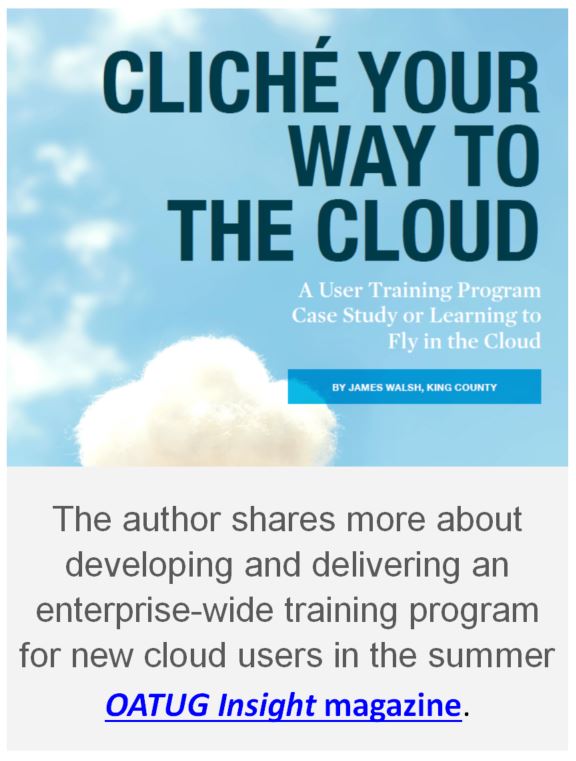We all become very happy and attached to an application we have spent time creating, developing and improving. What happens when it is time to upgrade that application or completely replace it? This is akin to being asked to replace a beloved family member or pet. It’s only a technological being, but a being you have devoted so much time and attention to that you cannot help feeling attached and bonded to this familiar friend.
The replacement decision for new software is more and more moving to a cloud solution. With Oracle Cloud, you need to get comfortable with the tradeoffs, like giving up control of patching and the ability to create back-end hacks that are sometimes necessary for workarounds to keep users happy. Especially when the move is to a cloud solution.
“What about your user base when you move to an entirely new application? How do they regain the productivity level they had attained with the legacy application?” If you are of good fortune, you can push your current application design to the cloud as a lift and shift and replicate the workflow and functionality of your existing application with the new “look and feel” of the cloud service.
What about your user base when you move to an entirely new application? How do they regain the productivity level they had attained with the legacy application?
How do you evaluate options for replacing your existing application? Currently in the market, there are generally three available paths to follow for replacing infrastructure:
- Replace on-premises system with new on-premises system.
- Third-party vendor hosting.
- Cloud service.
How can these upgrade options be evaluated? What criteria can be used to assess and rank these options?
- Total cost of ownership – over five years.

- Support model.
- System maintenance costs and cadence.
- Need for future upgrades.
- Implementation risk.
- Availability of competent system integrators.
- Project duration.
The other thing about application development is that the big hurdle is in the developing, testing and going live with the new creation. Oh, then what happens? You need to make it available for users. You need to train users on how to use the new application and support their on-going adoption and use.
This is where application roll outs can hit bumps in the road if care is not taken to put the application in the hands of users with training, support and help. The ultimate reason for creating the application is for the user, yet the user gets forgotten many times since technology developers do not typically excel in communicating the benefits, functionality and use of a new application.
Technology is not about technology, it’s about the people who use the technology — their increase in productivity, satisfaction and user experience. How can these outcomes be influenced in a positive way after the final go live for a new application? The answer is training, support, help and continued guidance for using the new application and “Learning to Fly in the Cloud.”
About the Author
James Walsh has 20 years of experience with Hyperion Essbase and now the Oracle Planning and Budgeting Cloud Service (PBCS). He is responsible for managing the team that supports the PBCS enterprise budget system and process for the King County Office of Performance, Strategy and Budget.